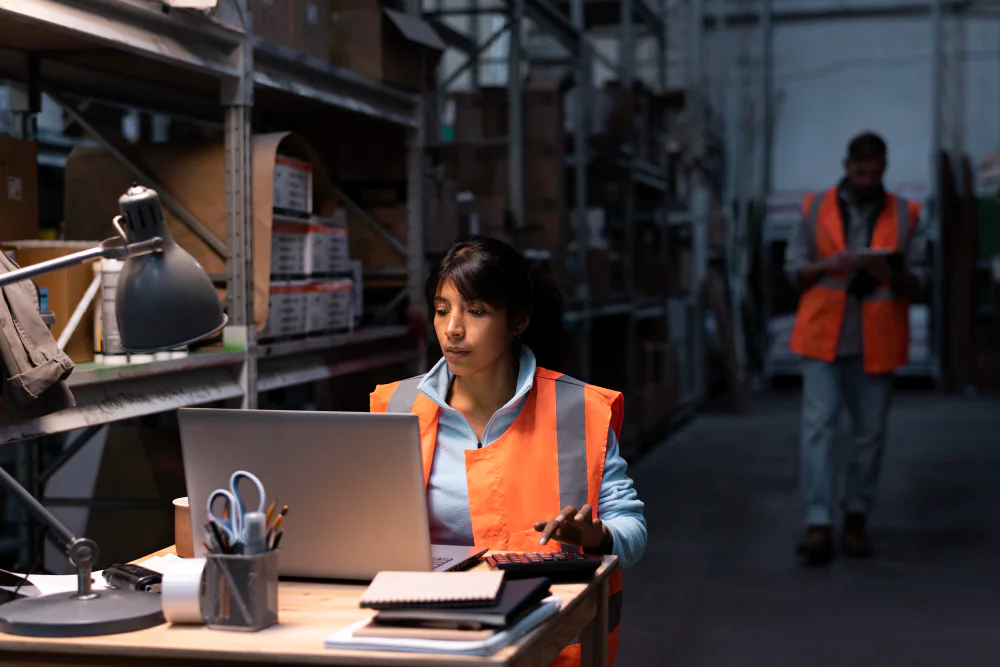
Table of Contents
Let’s dive into how these innovations are driving profound changes across industries and what this means for the future of commerce.
The rise of omnichannel strategies
In response to evolving consumer preferences, the increasing usage of omnichannel retailing has become a game-changer. Today’s shoppers expect a seamless, integrated experience across all touchpoints, whether they’re browsing online, using a mobile app, or visiting a physical store. E-commerce platforms are at the heart of this transformation, providing the tools and technologies needed to deliver a consistent and personalized customer journey.

Take Nike, for reference. By integrating its mobile apps, website, and physical stores, Nike offers customers a fluid shopping experience. Whether checking out the latest sneakers online, using the app to find sizes available at nearby stores, or enjoying personalized recommendations based on previous purchases, Nike ensures that each interaction feels connected and convenient.
Similarly, IKEA has successfully blended its online presence with its physical showrooms. Customers can explore products online, see how they fit into their homes using augmented reality, and then visit a showroom to experience the items in person. This seamless integration between digital and physical spaces not only enhances the shopping experience but also builds stronger customer loyalty.
Omnichannel strategies, powered by robust e-commerce solutions, are redefining retail right at this moment.
Personalization through AI and Machine Learning
E-commerce businesses are increasingly leveraging AI and machine learning to create highly personalized shopping experiences. By analyzing vast amounts of data, these technologies enable companies to understand customer preferences and behaviors, allowing for personal product recommendations and marketing strategies.
Amazon is a prime example of this innovation. Using AI and machine learning, Amazon’s search engine analyzes customer data, including past purchases, browsing history, and even wish lists, to deliver personalized product recommendations. This sophisticated system helps each customer to receive suggestions that are highly relevant to their interests, improving their shopping experience and driving sales.
Alibaba, another e-commerce giant, employs AI to offer personalized shopping experiences across its platforms. By integrating AI into its recommendation engines, Alibaba can predict customer preferences with remarkable accuracy. This technology not only suggests products but also customizes the entire shopping journey, from personalized homepages to targeted marketing campaigns.
Besides these giants, Asian startups are also integrating AI and Machine Learning into their daily operations, and it is great to see that proper investments are being put into these promising sectors.

The newest advancements in AI and machine learning, such as natural language processing and visual recognition, are further pushing the boundaries. These technologies facilitate real-time sentiment analysis and automated customer service. Hence, interactions are not only personalized but also contextually relevant.
Automation in logistics and supply chain
The integration of automation into logistics and supply chains is revolutionizing the efficiency of e-commerce operations. As businesses strive to meet increasing consumer demands, advanced e-commerce solutions are streamlining processes from inventory management to order fulfillment and shipping.
Automation technologies are playing a pivotal role in optimizing these operations. For instance, automated warehouses equipped with robots and conveyor systems can handle vast quantities of goods with speed and precision. These systems not only accelerate inventory management but also reduce human error and operational costs.
Innovative solutions are further expanding logistics capabilities. Drones, for example, are being tested and deployed for rapid delivery in urban and remote areas. Companies like Amazon are experimenting with drone technology to reduce delivery times and improve last-mile logistics, potentially transforming how quickly goods reach customers.
Similarly, Zara is a prominent example of utilizing automation in logistics and supply chains to enhance efficiency globally. With these solutions, Zara can respond swiftly to market demands, reduce operational costs, and maintain a high level of accuracy in order fulfillment.

Autonomous vehicles are also significant breakthroughs in logistics. Self-driving trucks and delivery vans can operate around the clock. The results are timely transportation of goods and addressing driver shortages. These vehicles also promise to reduce transportation costs and improve safety on the roads.
Blockchain technology is supply chain transparency by providing an immutable ledger of transactions. This innovation allows businesses to track goods in real-time, and verify authenticity, and ethical sourcing, thereby building trust with consumers.
Social commerce: Blurring the lines between social media and eCommerce
Social commerce is rapidly transforming the e-commerce landscape by seamlessly integrating shopping experiences with social media platforms. This convergence is blurring the lines between social networking and online retail, creating new opportunities for businesses to drive sales and engage with customers directly within their favorite social spaces.
Platforms like Instagram, Facebook, and TikTok are leading the charge in this revolution. Features such as shoppable posts, in-app checkout options, and live-stream shopping events are helping brands turn social interactions into direct sales opportunities.
For Instagram, its Shopping feature allows users to explore products and make purchases without ever leaving the app, streamlining the buying process and enhancing the overall shopping experience.
Similarly, TikTok has introduced features like the “Shop Now” button, allowing users to purchase products directly from video content with special promotions. This integration leverages the platform’s engaging content to drive impulse buys and capture the attention of a younger, highly engaged audience.
By tapping into the social nature of these platforms, brands can reach new audiences, build stronger customer relationships, and drive sales in a more authentic and interactive manner.
As social media and e-commerce continue to converge, businesses that embrace technology will be well-positioned to capitalize on these trends and thrive in an increasingly digital and interconnected marketplace.
The next frontier: Emerging e-Commerce technologies
As we look to the future, emerging technologies are poised to redefine the e-commerce landscape. Augmented Reality (AR), voice commerce, and cryptocurrency payments represent the next frontier in creating more immersive, convenient, and secure shopping experiences.
Augmented Reality is transforming the way consumers interact with products online. Virtual fitting rooms powered by AR technology enable shoppers to visualize how clothes will look on them without leaving their homes. This innovation, statistically speaking, reduces return rates by allowing customers to make more informed decisions.
Voice commerce is another game-changer, offering a hands-free, conversational approach to online shopping. With the rise of smart speakers and voice assistants, consumers can now place orders, check product details, and even track shipments through simple voice commands. This technology simplifies the shopping process and caters to the growing demand for convenience.
Cryptocurrency payments are gaining traction as a secure and efficient alternative to traditional payment methods. As digital currencies become more mainstream, e-commerce platforms are increasingly adopting them to offer customers more flexibility and lower transaction costs.
Conclusion
The future of e-commerce is incredibly exciting, with technology driving remarkable changes in how we shop and do business. From seamless omnichannel experiences to the power of AI, automation, and social commerce, we’re on the brink of a retail revolution. Emerging technologies like augmented reality, voice commerce, and cryptocurrency payments are not just trends—they’re shaping a more connected and intuitive shopping experience.
As we look ahead, it’s clear that embracing these innovations will unlock new possibilities and opportunities. The key is to remain open to these advancements and adapt swiftly. The future is bright, and it’s full of potential for those ready to embrace it.
Disclaimer: While BBCIncorp strives to make the information on this website as timely and accurate as possible, the information itself is for reference purposes only. You should not substitute the information provided in this article for competent legal advice. Feel free to contact BBCIncorp’s customer services for advice on your specific cases.
Industry News & Insights
Get helpful tips and info from our newsletter!
Stay in the know and be empowered with our strategic how-tos, resources, and guidelines.


